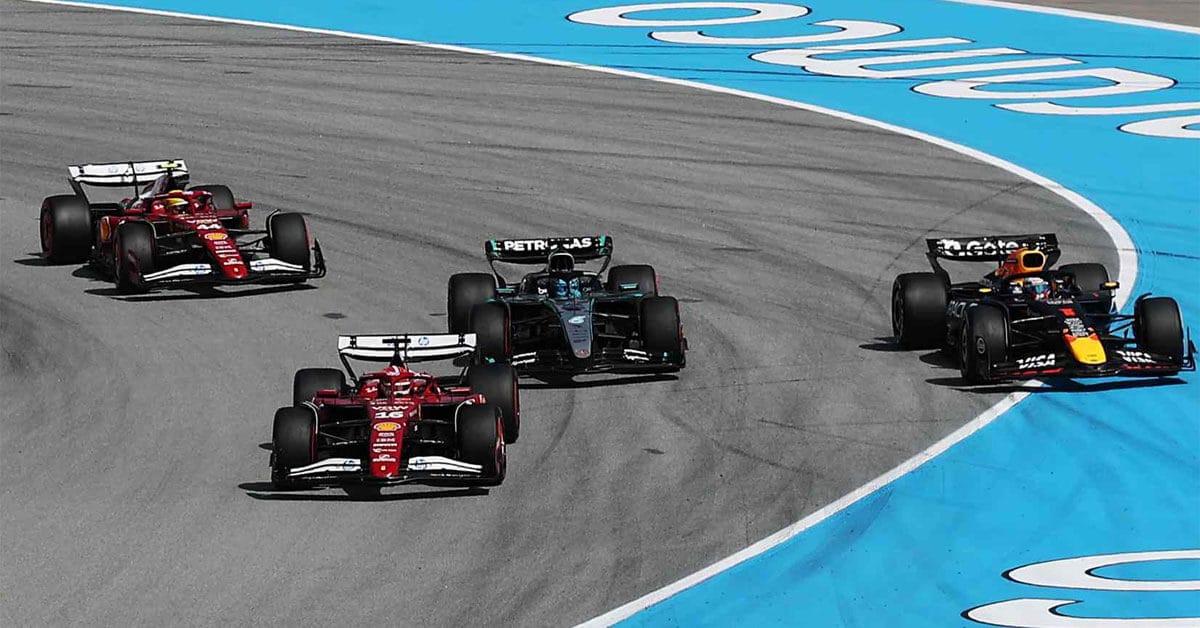Formula 1 cars are faster than ever, yet close battles on track are becoming more and more uncommon. The regulations introduced in 2022 by the FIA and Liberty Media to increase the spectacle on track have not worked. Will anything change with the introduction of the new rules?
The main straight at the Baku circuit is the longest in the entire Formula 1 calendar, almost twice the length of Monza’s. Yet the two thousand two hundred metres, with cars reaching over 330 km/h, were not enough to produce any exciting overtakes during the Azerbaijan Grand Prix. That is unacceptable, considering the goals set by the FIA when the current technical regulations were introduced in 2022. The identical post-race comments from Charles Leclerc, Lando Norris, Lewis Hamilton, and all the drivers who started further back and hoped to stage a comeback were rather discouraging. And Charles was furious about the qualifying crash that ended his streak of four consecutive pole positions with Ferrari on the shores of the Caspian Sea.
But how was it possible that, in just four years, Formula 1 managed to lose the “overtaking formula” that the FIA and Liberty Media had promised to create in order to make on-track action as entertaining as the show Stefano Domenicali has built around the Grands Prix? The reason lies in the continuous performance growth of the cars, driven by the pursuit of maximum aerodynamic downforce in corners – a constant factor even with the latest generation of cars that use the airflow under the floor to generate “ground effect”.
Technology keeps advancing
It is no coincidence that Max Verstappen at Monza set the fastest qualifying lap in Formula 1 history, with an average speed of 264.68 km/h, and that even the race average speed was a record. Track records continue to fall on almost every circuit. It is proof of the incredible progress achieved by cars and tyres, even though engine development has been frozen for years to reduce costs. The credit goes to the world’s best engineers recruited by the teams. Constant work in wind tunnels allows them to go beyond the limits set at the beginning of each regulatory cycle, ultimately cancelling out the positive effects those rules were supposed to bring.
The first “victim” of this evolution has been overtaking itself. Cars now create a “dirty” wake behind them that disturbs the airflow of those following, making close duels difficult. The most striking example was seen in Baku, where overtaking was complicated even with the help of the DRS rear wing, designed to give the pursuing driver an advantage of 10 to 15 km/h over the car ahead.
Next year, the regulations will change again. The biggest revolution in modern Formula 1 is coming, with completely new cars, engines, and tyres, including a redesigned hybrid system in the power units. This could be an opportunity for Ferrari and Mercedes to overturn the current hierarchy that has McLaren and Red Bull ahead. But there are also risks. The performance gap at the top could widen instead of shrinking. The new cars, which at first should be slower than the current ones, may not necessarily be more enjoyable to drive for the drivers. And once again, the brilliant aerodynamic minds – starting with the genius Adrian Newey – are working tirelessly to regain downforce and extract extra performance.
In short, the issue of missing or overly artificial overtakes could soon reappear. In the future, Formula 1 will have to find a different recipe for the spectacle. Perhaps by following the wishes of the drivers, who dream of lighter cars with more mechanical grip and less complex aerodynamics, like the ones driven by Michael Schumacher and Mika Hakkinen twenty years ago. That might be what it takes to see real overtakes again. All it would take is to listen to them.
Nov 2, 2025Luca Marini
Let other Scuderia Fans know about us


